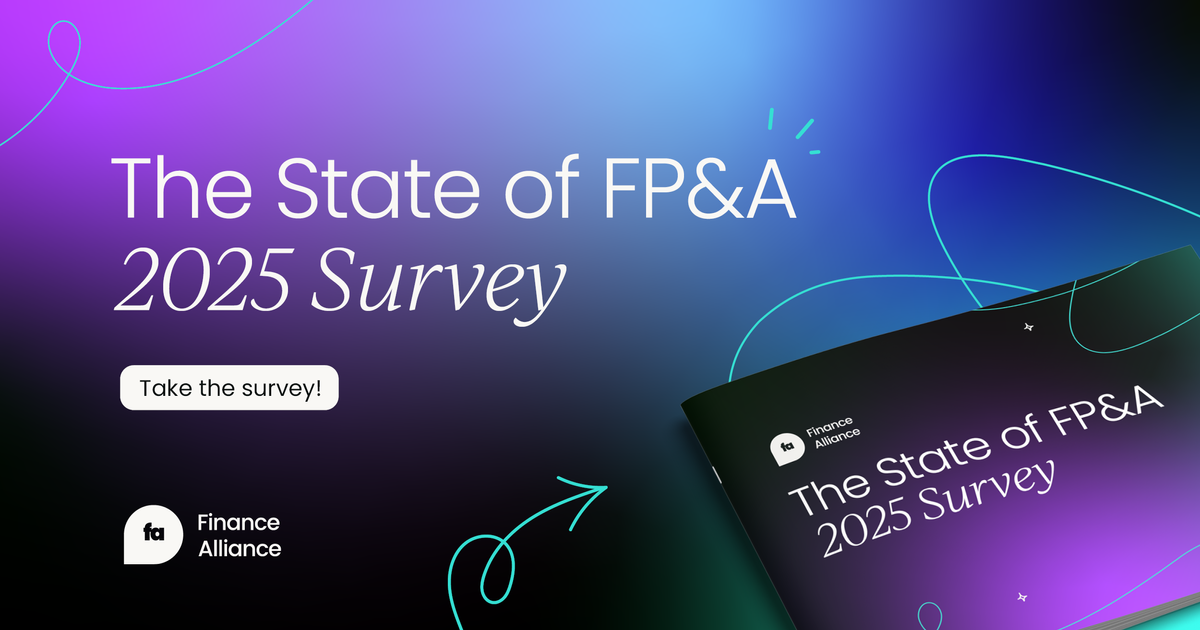What is budget allocation?
Budget allocation is the process of dividing your company’s financial resources between departments. As you can imagine, it can be a tricky process to get right. Everyone wants a bigger piece of the pie, and you can’t always please everyone.
Your main goal is to make sure each department has the funds it needs to operate effectively, while aligning spending with the company’s overall priorities.
You need to consider three main factors when determining how to allocate available funds:
1. Company priorities (what you need to spend money on to achieve the company’s goals)
2. Revenue projections (how much you can realistically spend)
3. Departmental needs (every department submits requests outlining their operational costs such as software, marketing campaigns, equipment, etc.)
Knowing how much each department can spend helps everyone stay on track and spend responsibly.
So, how can you develop a budget plan that meets different department needs while supporting your company's overall goals?
Continue reading to learn:
- Budget allocation plan (meaning and definition)
- The meaning of ‘allocation amount’
- Why it’s important to have a budget plan
- How to create a budget allocation plan (step-by-step)
- Who’s usually responsible for budget management
- 13 tips to allocate budget across departments
- Budget allocation FAQs
What is a budget allocation plan?
Allocating the budget isn’t as simple as writing a number on a piece of paper (or in an email) and handing it over to each head of department. You have to put those numbers somewhere - preferably, in a well put-together budget allocation plan.
A budget allocation plan clarifies how much the company can spend on a product, event, or person, etc. Your plan should clearly outline available funding and designate which individuals or departments can access those funds.
Budgets are used for two distinct purposes:
- Financial planning and control
Budgets help companies forecast income and expenses, which helps them to allocate resources effectively, avoid unnecessary spending, and identify potential financial risks before they become problems.
- Performance measurement and evaluation
By comparing actual results to the budget, companies can track their progress towards financial goals, identify areas where spending needs to be adjusted, and hold different departments accountable for responsible financial management.

What does the allocation amount mean?
The allocation amount refers the predetermined sum of money assigned to a particular department, project, or expense.
Let’s break it down to help put it into perspective in context of a company budget…
So, first let’s think of the company budget as the overall financial plan for the company. It's where everyone looks to see the expected income and planned expenses for a specific period (usually a year).
When we talk about ‘allocation’ in this context, we’re referring to the act of dividing the total budget into smaller portions for specific purposes.
Finally, the ‘allocation amount’ is the specific dollar value assigned to each portion.
Pretty simple, right? It basically tells you exactly how much money each business unit can spend within the broader company budget. This leads to improved financial control and better resource planning across departments.
Why companies need a budget plan (benefits)
50% of failed start-ups didn’t have a clear budget for their business when they launched, which underscores the important role of budget plans in a company's success.
It won’t come as a surprise to learn that most businesses have limited budgets. As much as you’d like to give every department the freedom to spend as much as they want, that's just not realistic.
Budgets force departments to prioritize their needs and allocate resources efficiently. Without them, costs can spiral out of control and lead to overspending.
Some more reasons why budget allocation is so important include:
- Financial control
- Optimal resource use
- Risk mitigation
- Strategic alignment
- Operational efficiency
- Performance evaluation
Without clear financial direction, you risk spending way too much on things like office supplies (guilty!) or you might misallocate resources altogether. Skipping a budget plan isn’t something you should be prepared to do, especially if you want to keep your business running successfully.
If you do have an issue with overspending, it might be time to get on top of your company’s spend control. You need to know how other departments spend company money. To get that information, you need visibility over who’s spending money and how they’re spending it. However, only 31.3% of companies believe they have good visibility while 40% have no clear idea of how money is spent.
To help improve spending visibility and keep everything in order, you need to create a budget allocation plan. So, let’s get into it.

How to create a budget allocation plan
A budget allocation plan provides a structured framework for distributing financial resources across a company’s departments, divisions, projects, and other entities.
If you want to create a strong budget plan, focus on making sure it’s:
- Realistic: Don't set yourself up for failure with impossible numbers.
- Transparent: Everyone on the team should understand the financial picture.
- Professional: Treat your budget as a strategic plan for success.
Alright, now let’s cover the steps to help you create a budget allocation plan from scratch:
1. Get to grips with your company’s strategic objectives
You’ll need to collaborate closely with the CEO and other key stakeholders to make sure the budget aligns with the company’s strategic goals.
So, try to open discussions to identify top priorities, such as growth initiatives, market expansion, product development, or efficiency improvements.
By understanding these main goals, you can create a budget that better supports the company's vision for the future.
2. Analyze past spending
Sometimes you have to look back to move forward and that’s definitely the case when it comes to creating a defined budget plan.
By reviewing historical budgeting data, financial statements, and performance metrics, you can categorize them into direct and indirect costs.
This will help you identify areas for potential savings, set realistic spending limits, and identify areas where financial performance can be improved.

3. Conduct financial forecasting
Develop financial forecasts that include revenue, expenses, cash flow, and capital expenditures.
Use both quantitative data and qualitative insights from market trends and industry analysis to inform these forecasts.
This is an important step to help you anticipate potential roadblocks (like unexpected expenses) and make informed decisions about resource allocation.
4. Consult department heads
Building a budget or spending allocation model that works for everyone isn’t a one-person job. You’ll have a much easier time (and create a better plan), if you seek insights from your department heads. Chat with them about their financial needs and priorities. This will help you to see things from their perspective.
For example, the marketing team might need more resources to launch a new campaign, while the sales team might be looking for ways to streamline their operations.
By working together, you can create a budget that addressed departmental challenges, which will help you allocate resources more effectively.
From there, you may employ a certain budgeting methodology such as:
5. Create preliminary budget proposals
With the strategic goals clear and department needs in mind, it's time to start building the budget! A good way to begin is by creating initial proposals that act like a first draft of the financial plan.
These proposals detail how resources will be allocated across the company. You essentially break it down for stakeholders, showing how much money will be designated for different functions and specific projects within each department.
These initial proposals are just the starting point, but they act as a foundation for further discussion and refinement before finalizing the official budget plan.
6. Assess risk and adjustments
You can’t predict everything, but you can be prepared. This step involves looking at potential risks, such as economic downturns, market instability, or changes in regulatory landscapes, and adjusting the budget to help mitigate these risks.
For example, you could incorporate contingency plans in case certain risks materialize and focus on creating a flexible budget that you can adapt as needed in response to changing circumstances.

7. Finalize and approve the budget
It’s go time! … (or is it?)
When you’ve taken time to incorporate feedback, you can finalize the budget plan and present it to the leadership team and the board for feedback and approval.
Your presentation should be clear and concise. So, try to stay on topic and explain why you’ve allocated resources the way you have. It helps if you can back up your decisions with data and showcase how the budget aligns perfectly with the company's goals.
8. Implement the budget
Once approved, you’re ready to work with the rest of your finance team and department heads to implement the budget.
To make this go as smoothly as possible, make sure everyone understands their allocated budget amounts, which will help them keep within spending limits.
9. Monitor the budget plan
Keep a close eye on the performance of your plan over the first few months following its execution. You might find that some are experiencing difficulties with keeping within the budget. If this happens, take time to assess the situation and be open to the possibility that the plan may need some changes.
When monitoring your allocation budget, focus on areas like:
- Spending: How much money is being spent in each department compared to their allocated amounts.
- Deviations: If there are any significant differences between planned and actual spending, you should investigate why.
- Course correction (if needed): Based on your findings, you might need to adjust spending or make changes to the budget.
10. Adjust your budget allocation plan
There might be times when you need to adjust the budget throughout the year. This is why it’s important to create a budget that’s flexible, which means you can adapt it easily without uprooting the entire thing.
By being able to adjust the budget, you can respond to changes and stay ahead of the curve.
Who is responsible for budget management?
Typically, budget management involves multiple roles and stakeholders within an organization, such as:
- CFO - The Chief Financial Officer is ultimately responsible for high-level budget strategy, financial planning, and oversight of the overall budget. This holds true across multiple industries with McKinsey reporting that 72% of CFOs say they're the most involved executives in allocating financial resources.
- Finance department - The finance team manages day-to-day budget tracking, reporting, analysis, and controls. They also develop budget allocation models and processes.
- Department heads - Leaders of business units are involved in budget requests, planning, and managing budgets for their departments.
- Controller - The controller plays a key role in budget control and variance analysis and often enforces compliance with budgets.
- Budget analysts - Analysts assist with budget forecasts, data analysis, and preparation of budgets.
- Project managers - Project leads maintain budgets for specific projects and initiatives.
- Executives - The CEO, COO, and other executives weigh in on high-level budget direction aligned to business strategy.
While the CFO may be the ultimate budget owner, effective budget management requires collaboration across these different roles to develop, track, control, and optimize budget performance.
13 tips to allocate budget across multiple departments
Here are 13 tips for effectively allocating budget across multiple departments.
1. Involve department heads early in the budgeting process
Have them provide input on their resource needs and strategic priorities. This buy-in helps to create shared ownership.
2. Employ a standardized approach
Implement a standardized budgeting process throughout the company to maintain consistency and fair allocation while considering each department’s unique needs.
3. Analyze historical spending
Search spending history to help identify trends and seasonal fluctuations. Use this data to forecast future budget needs.
4. Set organization-wide goals and communicate strategic priorities
Departmental budgets should align with these overarching objectives. This alignment not only ensures financial coherence but also enhances operational synergy.
5. Tie budgets to realistic forecasts
Allocate the budget in the context of revenue projections, not last year's numbers. By aligning budgets with realistic forecasts, you’ll ensure a more adaptive and forward-looking financial strategy positioned to navigate through evolving market conditions and emerging challenges.
6. Reserve a percentage of the total budget for discretionary spending
This buffers against unforeseen expenses arising mid-year. Reserving some of the budget for a rainy day could prove to be vital for mitigating risks and safeguarding against financial strain.
7. Prioritize ROI-driven activities
Allocate more significant budget portions to departments or projects that exhibit higher Return on Investment (ROI), ensuring funds are applied in areas that create value.
8. Require departments to justify requests exceeding historical allocations
Scrutinize large variances before approving. This helps ensure that any significant deviations from past spending are thoroughly vetted and aligned with strategic objectives.
9. Stage budget distributions
Granting each department funds quarterly or monthly versus upfront. This improves oversight. Plus, allocating budgets in installments rather than lump sums allows closer monitoring of spending patterns and burn rates.
10. Establish policies on budget transfers between departments
Policies that allow flexibility while maintaining control enable resources to be shifted to higher-priority needs when necessary.
11. Compare the allocated budget to actual spending and hold department heads accountable
Regular check-ins on budget versus actuals reveal if departments are lagging or outpacing their plan. It’s also important to hear from department heads so that actuals vary from the budget by higher than expected, they can explain, and you can analyze root causes together.
12. Leverage technology
Implement budget management software and analytical tools to streamline the allocation process. If done right, technology can help ensure accurate tracking, and provide actionable insights that inform future allocations.
13. Review budgets regularly
Continually track budget usage against set benchmarks and revisit allocations if company priorities shift mid-year. Revising budgets is one of the biggest priorities of modern-day CFOs according to PwC, who say CFOs prefer to work closely with colleagues across the C-suite to adjust budgets and revisit pricing models.
Budget allocation FAQs
What does allocation amount mean when budgeting?
In budgeting, the allocation amount refers to the specific sum of money designated for a particular purpose or department within a company. This amount is determined based on expected costs and strategic goals, guiding how financial resources are distributed.
How to avoid over allocating departmental budgets?
To prevent over-allocating departmental budgets, it helps to start with accurate financial forecasts and prioritizing resources based on company objectives.
What does allocation method mean?
The allocation method in budgeting describes the specific criteria and processes used to distribute available financial resources among various departments or projects.
How do you allocate a budget effectively?
Allocating a budget effectively involves understanding organizational goals, evaluating past expenditures, and forecasting future needs. You need to strike a balance between strategic priorities and available resources to make sure every dollar supports the overall business goals.
What is the basic budget allocation?
The basic budget allocation typically involves dividing funds among essential categories such as operations, capital expenditures, personnel, and marketing. The exact categories depend on the business's nature and strategic priorities.
What is a budget allocation model?
A budget allocation model is a framework used to decide how funds should be distributed within an organization. It includes methodologies and principles guiding financial decisions, often incorporating factors like historical data, business objectives, and expected returns.
How should a budget be set up?
Setting up a company budget involves defining financial goals, estimating revenues, forecasting expenses, and allocating resources across departments. A budget is essentially a strategic plan that guides fiscal management over a specified period.
What is budget resource allocation?
Budget resource allocation is the process of assigning financial resources to different areas within a company to achieve optimal use and support business objectives effectively.
How to allocate money in a budget?
Allocating money in a budget requires analyzing each department's needs, the company's strategic goals, and expected income. Funds should be distributed to ensure operational efficiency and foster growth in key areas.
What is the best allocation method?
The best allocation method depends on the specific needs and strategy of the organization. However, activity-based costing (ABC) is widely regarded for its accuracy in assigning costs based on actual activities, providing a more detailed understanding of resource utilization.
Improve your budgeting skills with FP&A Core: Certified
Join the ranks of elite financial professionals with our FP&A Certified Core course.
Designed for those aspiring to make a significant impact in their organizations, this course offers deep dives into financial modeling, forecasting, budgeting, reporting, and more.
As you progress, you’ll unlock the secrets to crafting compelling financial narratives that influence decision-making at the highest levels.
Start your journey to becoming a certified FP&A expert today and build the career you've always wanted.



 Follow us on LinkedIn
Follow us on LinkedIn






